It's Official! Tsinjoarivo Forest will achieve legal protection
The Deep Roots of Forest ProtectionEver since the three SADABE co-founders first visited Tsinjoarivo forest in 2000, as students, the idea of somehow achieving lasting legal protection of the forest ecosystem was never far from their minds. Beginning in 2007, after years of primatology research, SADABE was created and was able to launch a series of reforestation, fish ponds and beekeeping initiatives. These activities, centered around the forest fragments at Mahatsinjo, helped relieve pressures on the local ecosystem while building long-lasting relationships with local communities. We also supported a community primary school at Mahatsinjo for a decade beginning in 2005, enabling many children to reach higher levels of education than they otherwise would have been able to. Although our activities lost some momentum during the political crisis of 2009-2013, SADABE was able to keep research projects alive, monitor the integrity of the forests, track lemur groups, and continue to engage with local communities. We were also able to introduce a newly-created "Field School" program for student training, a joint initiative launched in 2012 by the University of Antananarivo, University of Massachusetts, Northern Illinois University and SADABE. Beginning in 2015, SADABE began more serious conversations with local forestry authorities and starting laying the groundwork for the next step. Our primatology and biodiversity research continued, as well as the launch in 2016 of a second field school in collaboration with the University of Western England. The list of motivations for forest protection now included preserving fertile training grounds for Malagasy university students, in addition to ecosystem stability, preventing extinctions, and community access to resources and ecosystem services. This increase in activities placed SADABE in more frequent contact with the Vakinankaratra region's office for the Ministry of Environment, Ecology and Forests based in Antsirabe, and we began hosting short site visits for the regional director and his staff. It became clear we largely shared the same goals, and this partnership became crucial in the development of a strategy to create a protected area. Throughout 2015 and 2016, this regional office assisted SADABE in the creation of a proposal document which was presented to the national Ministry directors.
|
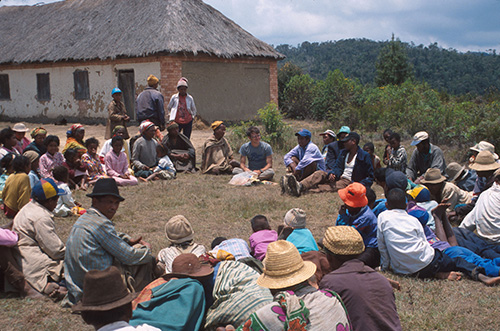
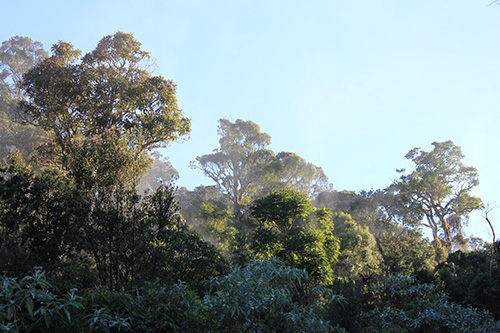 |
|---|
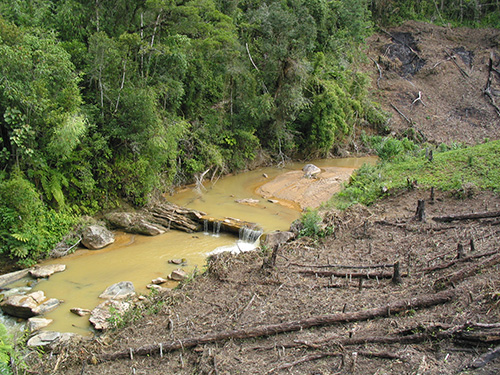
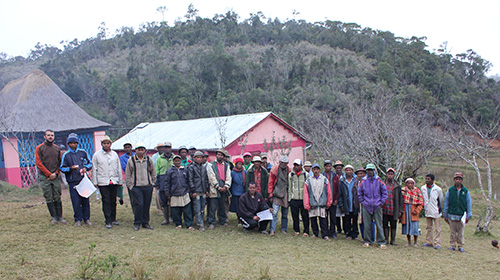 |
Finding FundingAfter receiving positive feedback from national authories in 2016, SADABE began actively seeking donors to cover the substantial costs of protected area creation. After nearly a year, we were very grateful to learn in late 2017 that Rainforest Trust had awardes SADABE a five-year grant to cover the costs of protected area creation. The NAP ("nouvelle aire protégée") creation project will last from 2017 to 2022, and will be co-managed in-country by SADABE and Madagasikara Voakajy, another Malagasy NGO who had previously launched projects with Rainforest Trust. The Tsinjoarivo-Ambalaomby protected area that will eventually be created will serve the needs of multiple stakeholders. Rural populations, some of the poorest in Madagascar, will gain more stable land tenure for dwellings and fields under cultivation, and will also benefit from the extensive training, health and education initiatives the project will bring. The protected area will include several villages - unlike past eras of conservation, management of the protected area will incorporate protection of forest ecosystems with controlled, sustainable use of some forest resources. The Malagasy state will achieve more lasting protection of her invaluable natural resources, and Malagasy not directly living in the project area will benefit - for example, Tsinjoarivo forest will continue to be a rich area for training Malagasy students based at the University of Antananarivo interested in lemurs, biodiversity, and the human-wildlife interface. Finally, preventing deforestation and erosion at Tsinjoarivo-Ambalaomby will stablize ecosystem services, and waterflow to low-lying areas - critically important given the planned development of a hydroelectric generating station farther down the Onive River. Finally, preventing deforestation will have a tangible impact on mitigating human-caused climate change, a benefit to everyone. Thus, we are pleased to report that the new protected area will be a direct continuation of SADABE's founding principle and philosophy for more than a decade - to integrate both ecosystem and human well-being.
|
|
The Long Road AheadThe process will be long: Malagasy law spells out the many careful steps that have to be taken in order to create a NAP. This will involve consultations at the national, regional, district and local levels, careful negotiations with competing claims to land (such as mining and hydroelectric projects), and elaboration of a detailed management plan. Only after several rounds of public consultation and collaborative planning will the process culminate in a temporary protected status. Some time after that, the process will be evaluated, and after necessary course corrections, SADABE will request permanent protected status. Even then, it is likely that SADABE will take a lasting role in oversight and management before the protected area becomes self-sustaining and stable. Currently we are planning for a temporary protection statute in 2020 and permanent protection statute no later than 2022, but it is important to keep in mind that there is a long road ahead, and no guarantee that we will be successful: the government will only approve our dossier if they are convinced it respects the rights of all stakeholders and provides tangible benefits. Please stay tuned for more updates! Whether you are a long-time partner, or are reading about our organization for the first time, we welcome your feedback, and if you haven't yet visited the stunning rainforest ecosystem at Tsinjoarivo-Ambalaomby, we hope you will consider making a trip very soon, and experience for yourself its rich cultural and biological heritage! |
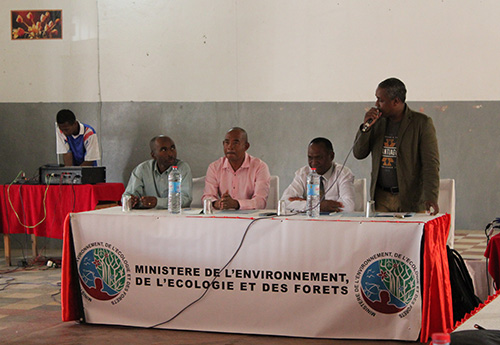
|
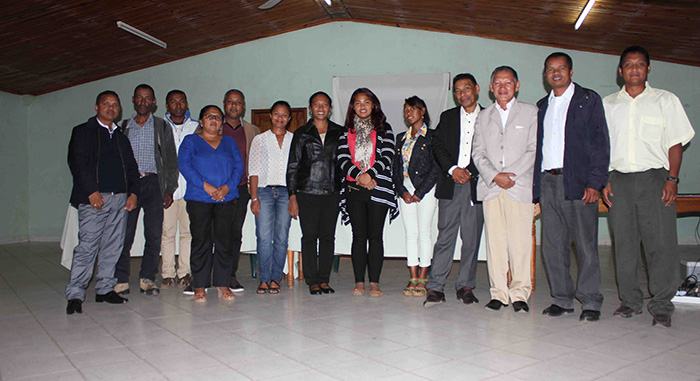 |
This workshop in November 2017, hosted by SADABE, brought together forestry authorities from the national headquarters in Antananarivo as well as the regional authorities from Vakinankaratra and Alaotra-Mangoro. This was just the first in a long series of consultations and collaborations! |
| Close Window |
|---|
